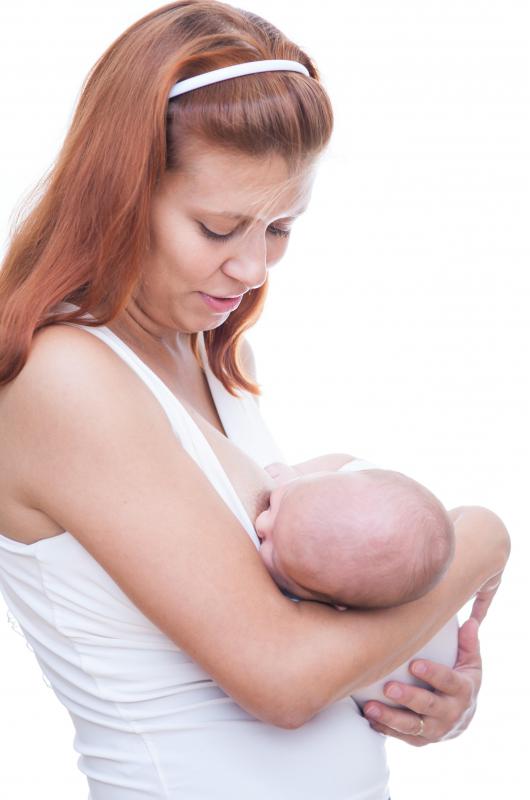At WiseGEEK, we're committed to delivering accurate, trustworthy information. Our expert-authored content is rigorously fact-checked and sourced from credible authorities. Discover how we uphold the highest standards in providing you with reliable knowledge.
How do I Choose the Best Breastfeeding Bottles?
Choosing high quality bottles is one of the many challenges new parents and infant caregivers will face, and the bottle needs of breastfeeding infants differ from formula-fed infants. While breastfeeding mothers tend to use bottles less than parents who feed their babies formula, some may choose to pump milk to leave with a caregiver, requiring durable bottles that are easily integrated with a pump system. In order to decrease nipple confusion and improve convenience for caregivers, it is important to choose breastfeeding bottles that mimic the breast as much as possible and that are useful for storage.
Most doctors and lactation consultants advise breastfeeding mothers to refrain from offering their babies a bottle until after their milk supply is established so that the baby will not experience nipple confusion. Many brands of bottles are marketed as breastfeeding bottles, but the right nipple can actually make the biggest difference in a baby’s acceptance of a bottle. Nipples on breastfeeding bottles should have wide, soft bases that feel similar to an actual breast. The baby’s mouth needs to open more than an inch wide in order to use the same muscles while drinking from a breastfeeding bottle that they use while nursing. A good nipple should also have a slow flow because a baby that is used to working harder to extract milk from a breast could choke on a fast-flow nipple.

Another important feature of good breastfeeding bottles is storage capacity. Breastfeeding mothers will need to pump milk to be stored and saved for when a caregiver feeds the baby. Some breastfeeding bottles are made with a separate cap that can replace the nipple, and the filled bottle can be stored in the freezer or refrigerator. Some breastfeeding bottles can be attached directly to a breast pump, reducing the need for transferring milk from a separate container into a bottle. The best breastfeeding bottles will have the ability to both attach to a breast pump and be stored long-term in a freezer.

The material used for breastfeeding bottles is also important to consider. Plastic bottles are very popular because of their durability, but studies have shown that some plastics may leach controversial chemicals, bisphenol-A (BPA) and polycarbonate, into the milk. Be sure to check the packaging for plastics that do not contain these chemicals. Glass bottles leach no chemicals into the milk but can break and do not store as well in the freezer. Bottles with plastic disposable inserts may be convenient, but the inserts will not decompose and are therefore not as environmentally friendly.
AS FEATURED ON:
AS FEATURED ON:












Discuss this Article
Post your comments